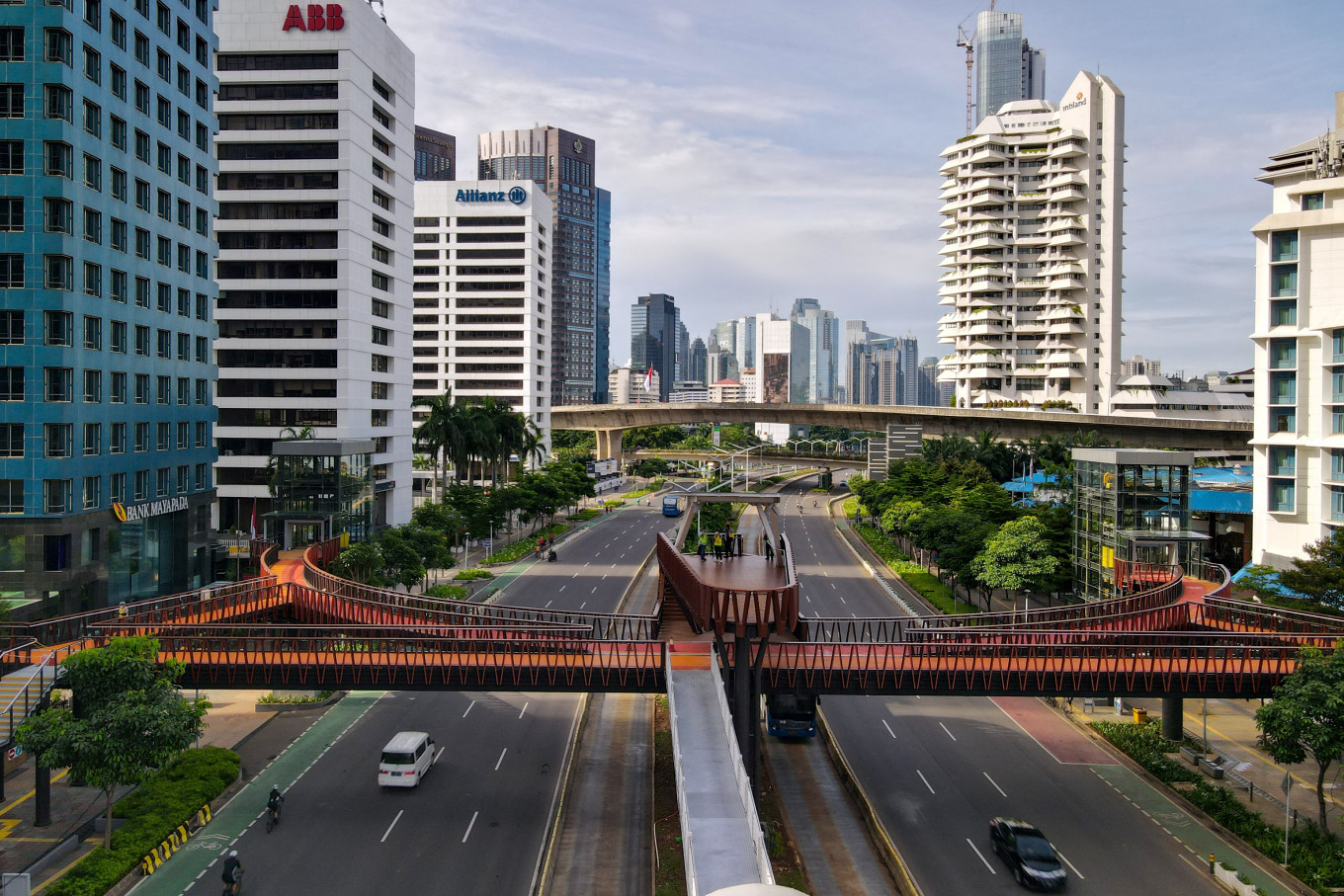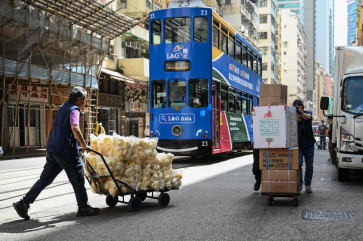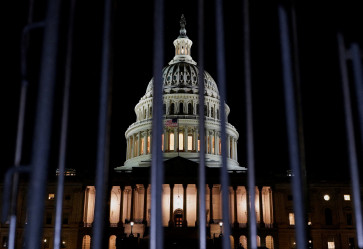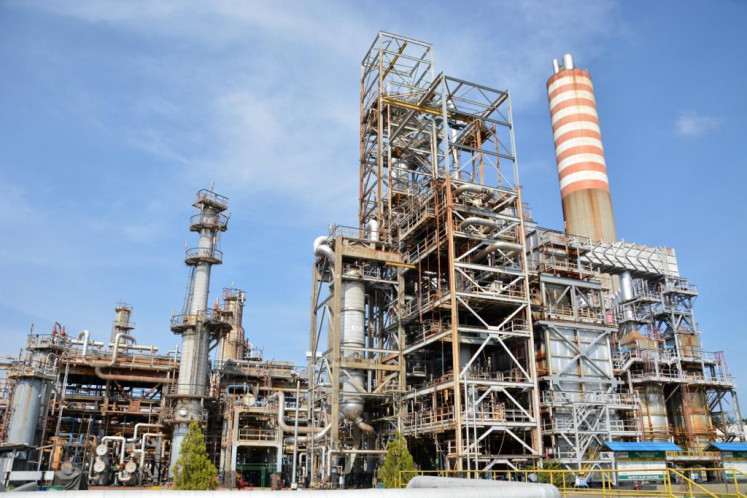Popular Reads
Top Results
Can't find what you're looking for?
View all search resultsPopular Reads
Top Results
Can't find what you're looking for?
View all search resultsBridge revamp sparks fresh debate on Jakarta’s pedestrian access
Footbridges allow commuters to reach Transjakarta bus stops, which are often on a dedicated lane on the right-hand side of the road.
Change text size
Gift Premium Articles
to Anyone
T
he renovation of a pedestrian bridge on Jl. Sudirman, Central Jakarta, which has garnered public attention due to its unique design, is nearing completion, in the latest move by the Jakarta administration to revamp its old bridges to make the city more pedestrian-friendly.
Overhead pedestrian crossings are a common sight in Jakarta, particularly on its main thoroughfares. Footbridges also allow commuters to reach Transjakarta bus stops, which are often on a dedicated lane on the right-hand side of the road.
The currently renovated pedestrian crossing, dubbed Karet Sudirman Bridge, sits atop the Karet Transjakarta bus stop and boasts a design reminiscent of a phinisi, a traditional ship built by Bugis-Makassar people in South Sulawesi.
The bridge is equipped with lifts and ramps to make it accessible to the elderly, people with disabilities as well as cyclists, while weight sensors are also installed to provide warnings whenever the bridge is nearing its maximum capacity.
Jakarta Bina Marga road agency, which is currently revamping the Karet Sudirman Bridge, has said the renovation project is near completion, adding that the pedestrian crossing will be inaugurated “soon.”
While the bridge is being built, a temporary pelican crossing has been installed nearby to allow pedestrians to cross Jl. Sudirman or to enter the Karet Transjakarta bus stop.
A pelican crossing is similar to a traditional zebra crossing, but it is equipped with its own traffic lights. A similar facility was installed near the Hotel Indonesia traffic circle in Central Jakarta.
Fitria Wulandari, 25, said the Karet Sudirman Bridge would allow pedestrians like her, who regularly cross Jl. Sudirman as part of her commute from her home in Setiabudi, South Jakarta, to her workplace in Tanah Abang, Central Jakarta, to cross the street without fear of traffic.
She said the current pelican crossing was accessible enough for her to cross the street. However, Fitria, added that the waiting time could be long, up to 120 seconds, before the pedestrians could cross the street, while some motorists also often ignored the traffic lights.
“Sometimes cars or motorcycles will still go ahead, even when the lights on the pelican crossing have already turned red,” Fitria told The Jakarta Post on Wednesday.
The Jakarta administration has been revamping older pedestrian crossings in order to make them safer, more accessible and aesthetically pleasing. In 2019, the city administration revamped four bridges, namely the bridge near the Gelora Bung Karno sports complex, in front of the Jakarta Police headquarters and at the Senayan traffic circle, as well as another bridge in Dukuh Atas, Central Jakarta.
Read also: Paths to heaven or hell? Jakarta's old, new pedestrian bridges
Observers, however, have said that the administration’s recent focus on redeveloping bridges across the city underline the automobile-centric nature of development in the capital, where pedestrians and cyclists are often forced to make way for motorized vehicles.
“The development of overhead pedestrian crossings shows that private vehicles are getting the priority [in Jakarta], compared with pedestrians,” said Institute for Transportation and Development Policy (ITDP) Southeast Asia director Faela Sufa on Thursday
She went on to add that pelican crossings were more appropriate to the needs for pedestrians in urban cities as they are more accessible, particularly for people with disabilities, and allow pedestrians quicker access to cross the street.
Alfred Sitorus of the Pedestrian Coalition concurred with Faela, while also suggesting the city administration allow the pelican crossing to continue in operation after the Karet Sudirman Bridge is inaugurated to see which facility attracts more use.
He said he was convinced that more people would use the pelican crossing, highlighting its accessibility to meet pedestrians’ needs in crossing the road.
Read also: Commentary: Down with the bridges, let's reclaim our streets
Jakarta Bina Marga road agency head Hari Nugroho, meanwhile, defended the renovation project, saying that the previous bridge had been badly damaged and in need of a revamp. He added that if the current pelican crossing was made permanent, it could worsen traffic congestion on Jl. Sudirman.
“Because of the high volume of pedestrians, a [permanent] pelican crossing on an arterial road could hinder traffic [flows], including the Transjakarta headway,” said Hari.
He emphasized that facilities had been installed to ensure that the bridge would be accessible for people with disabilities, the elderly and cyclists.










